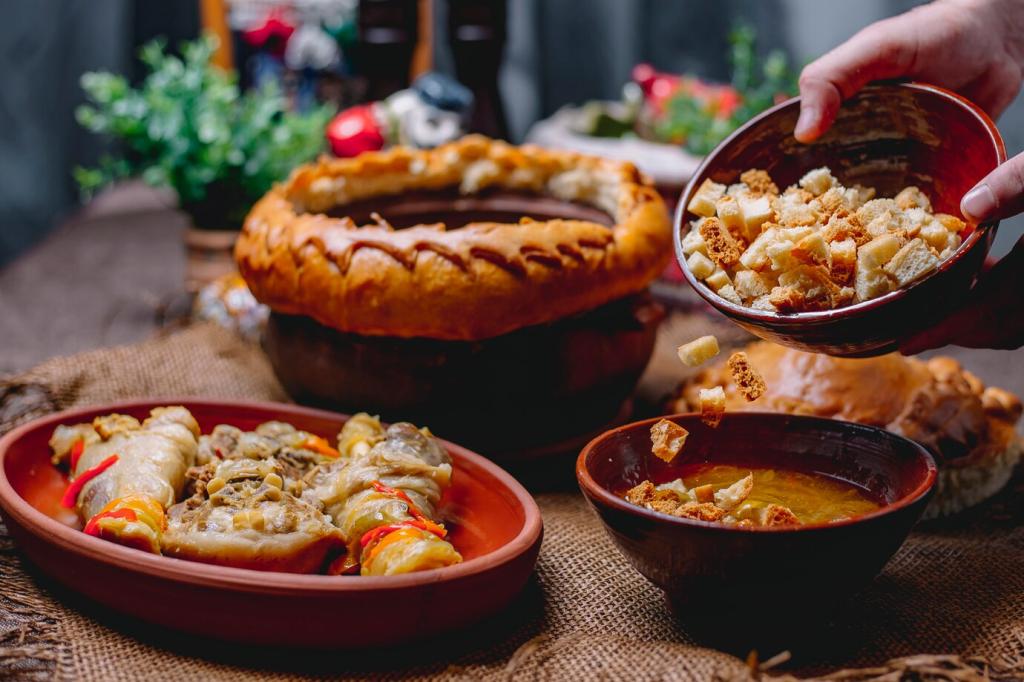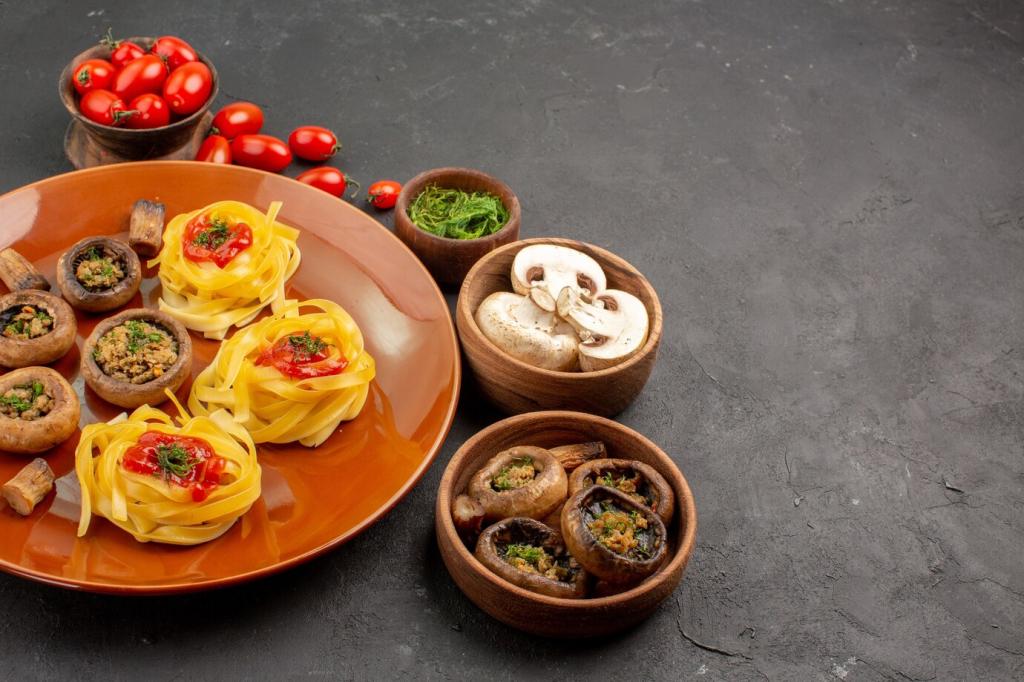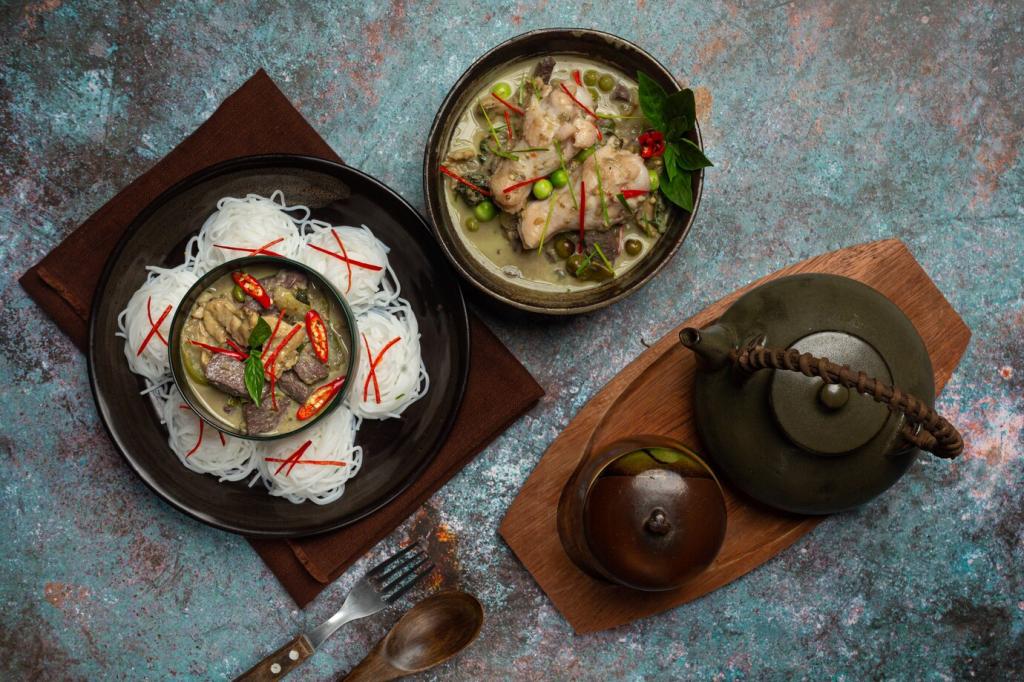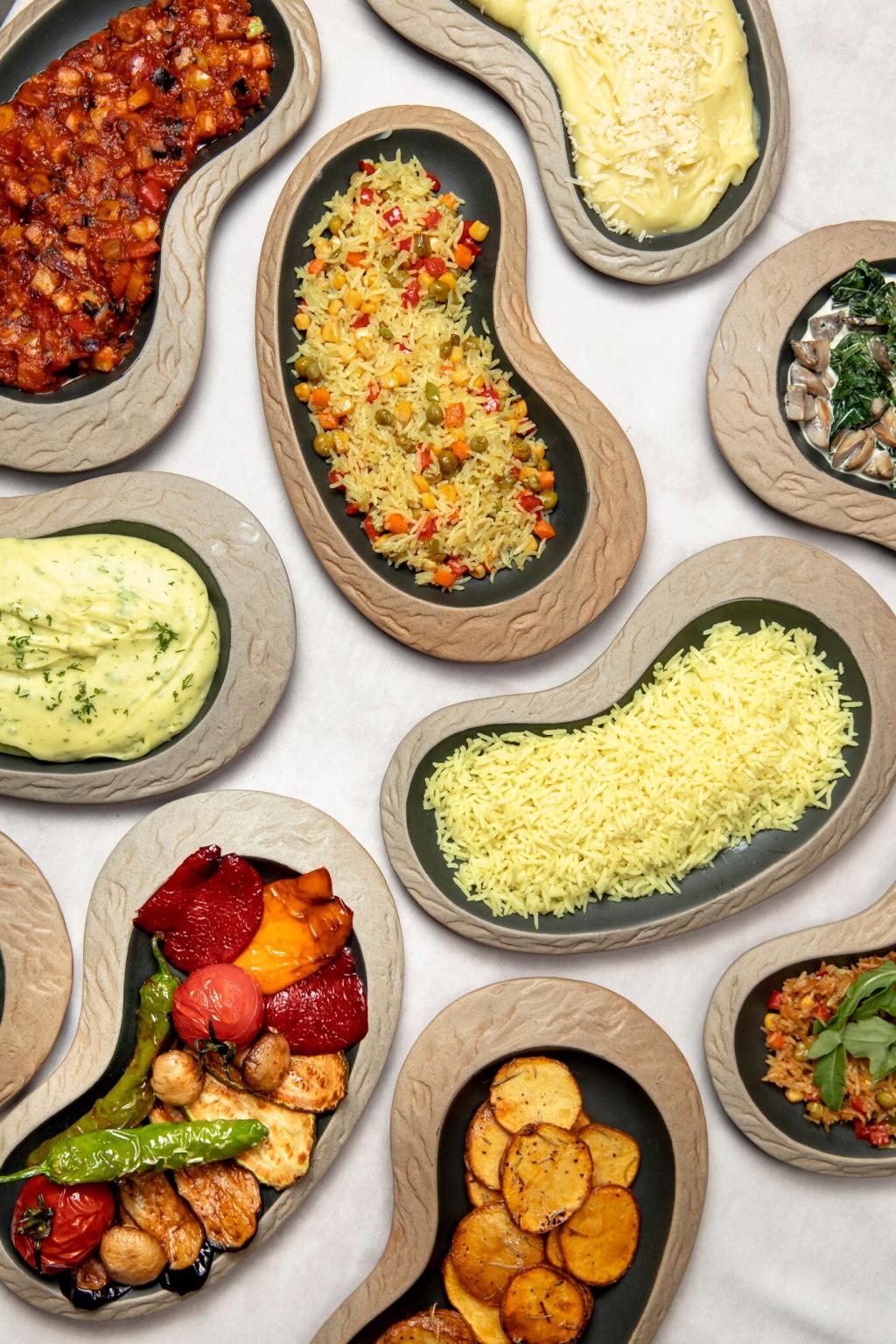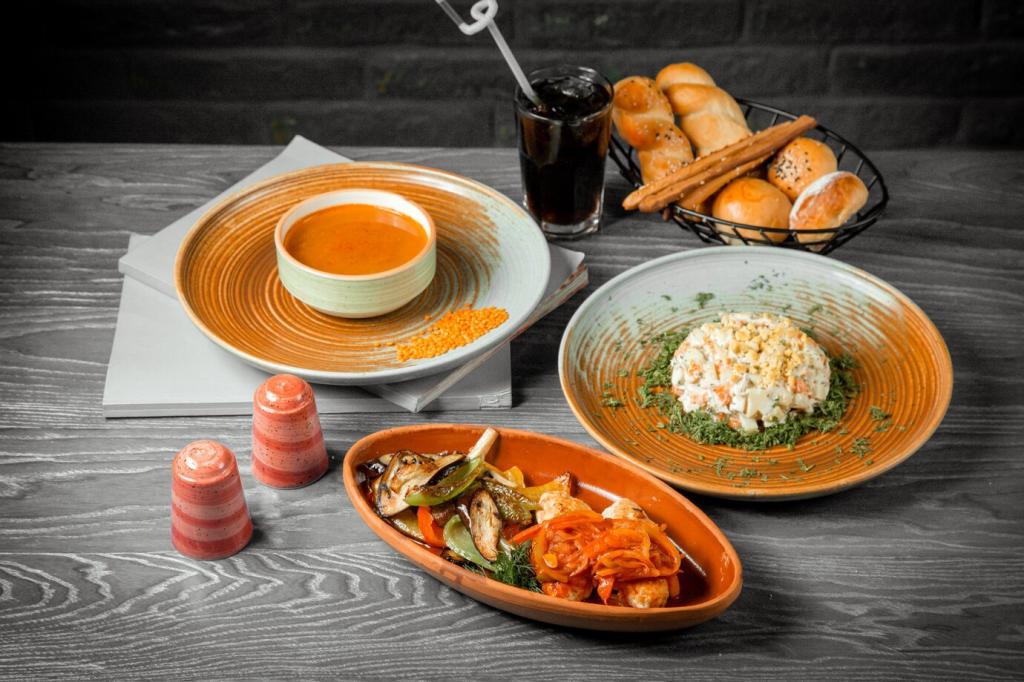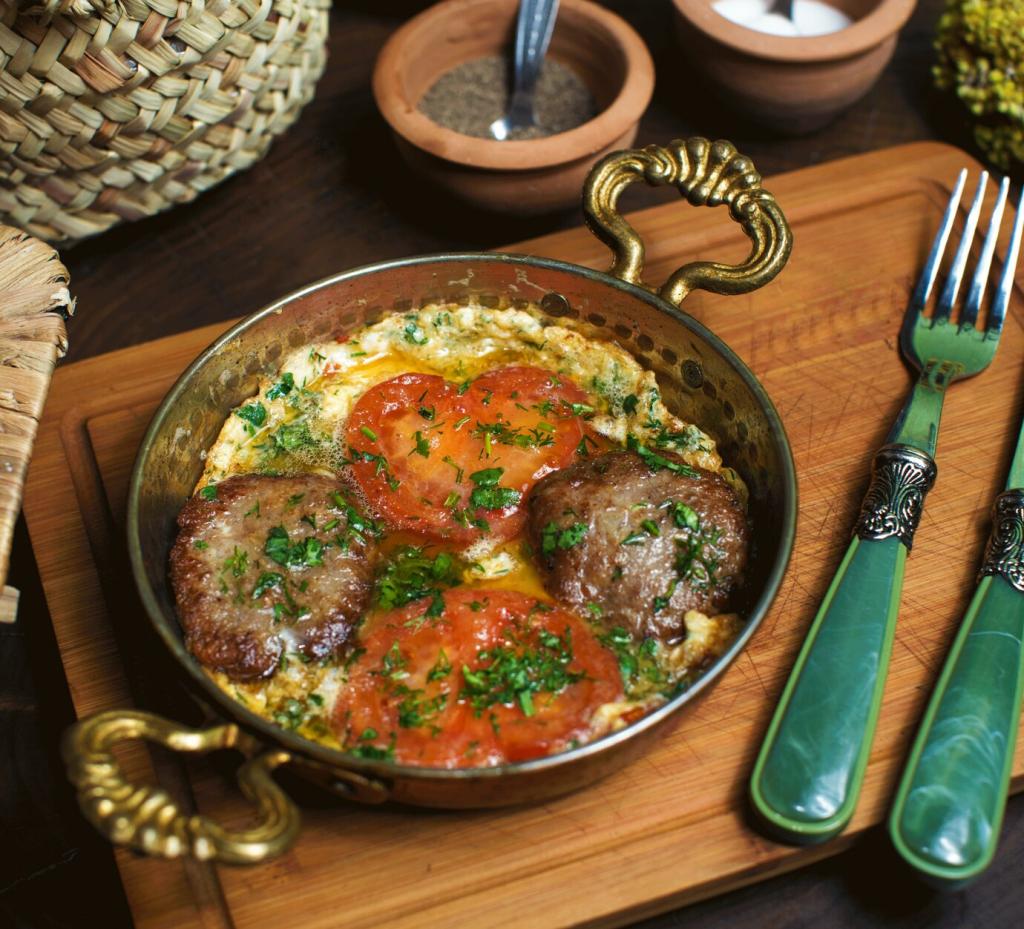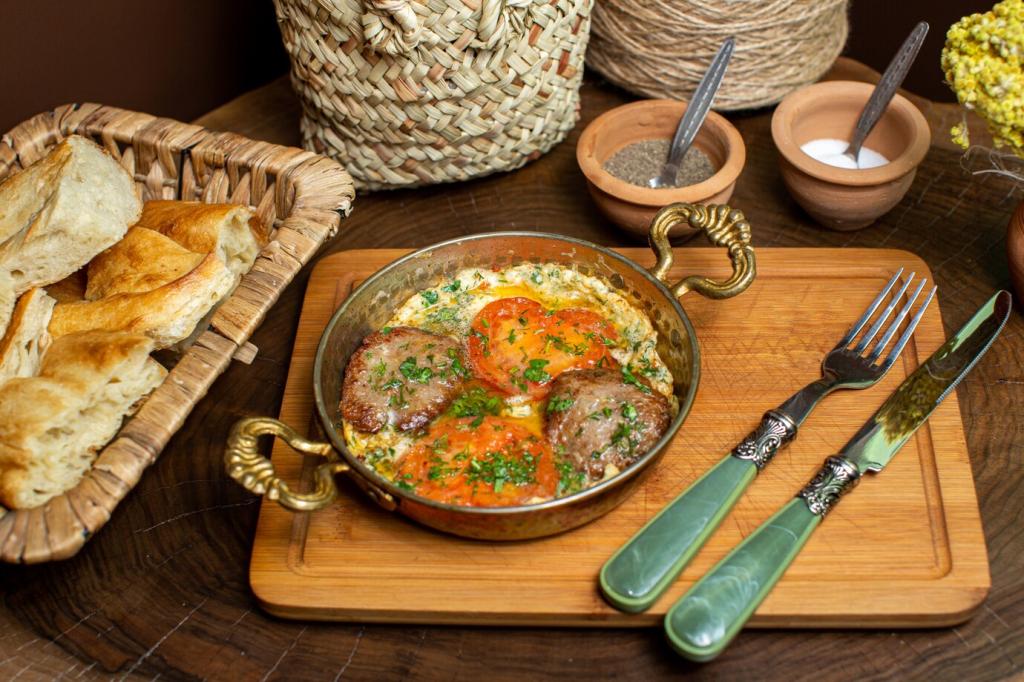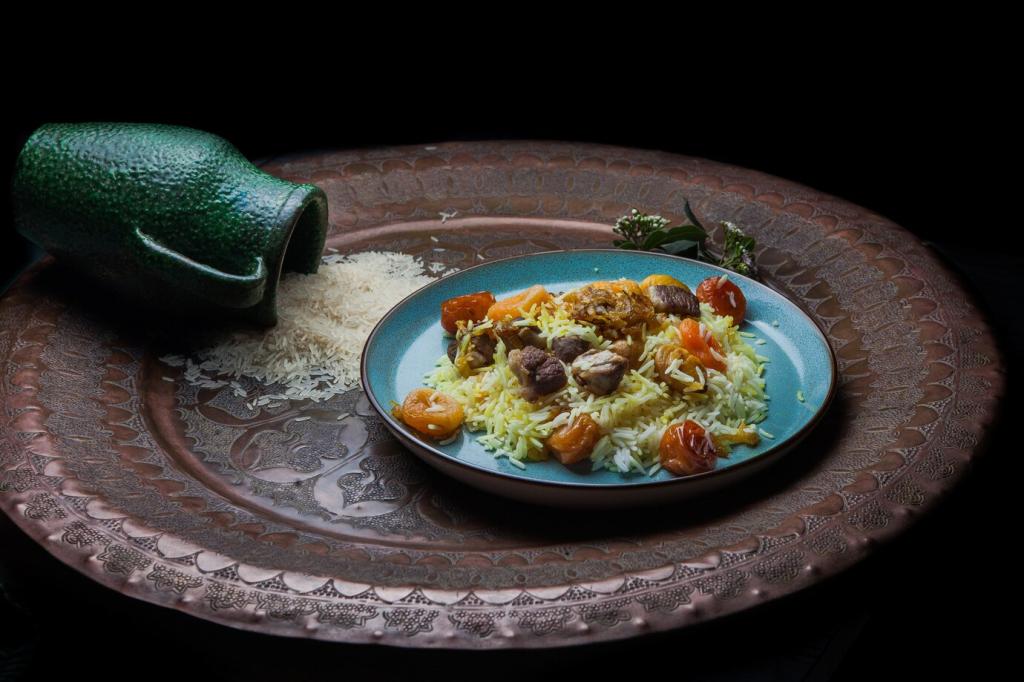Roots and Rituals of Tom Yum
Picture wooden boats nudging along Bangkok waterways, vendors bruising lemongrass with quick, practiced taps. That same rhythm echoes at home tonight when you stir your pot, chasing aroma trails that promise warmth and welcome.
Roots and Rituals of Tom Yum
Tom Yum lives where spicy, sour, salty, and a whisper of sweet meet. Fish sauce deepens, lime juice brightens, chilies spark, and herbs sing together, coaxing harmony from ingredients that might clash in lesser hands.

